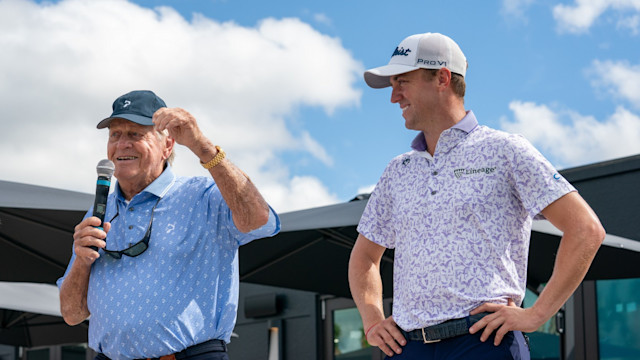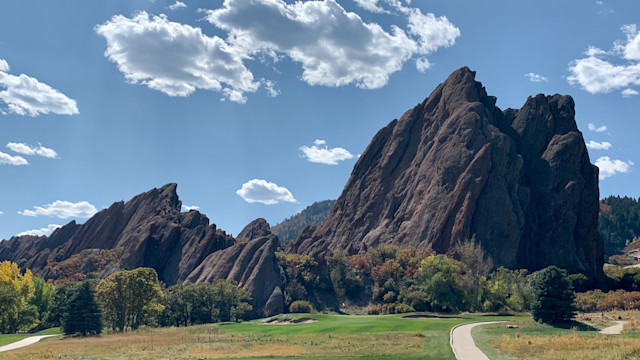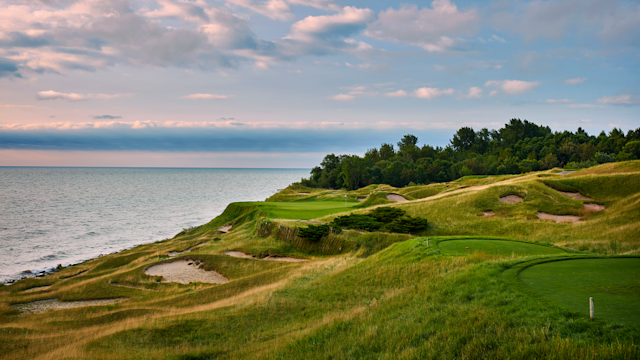Course Spotlight
Top Four Hardest Public Golf Courses
Published on
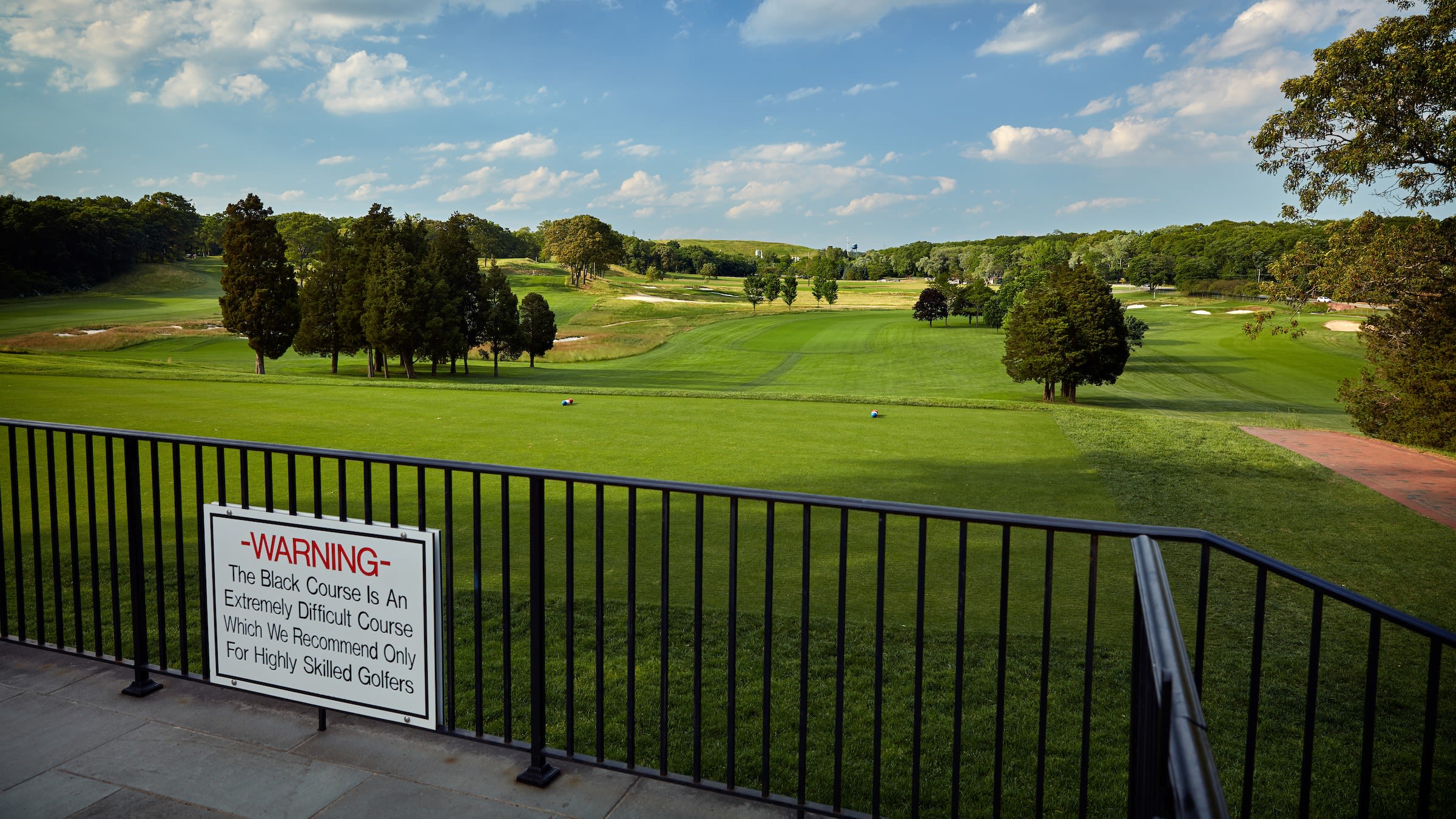
There are a lot of different characteristics that might make a golf course hard.
Whether it be penalty areas, thick rough, constant wind or fast greens, there are many factors that can make a layout brutally difficult. Many of the hardest golf courses are private clubs, but some are open to the public, either all the time or on specific dates.
Looking for a challenge this year? Let’s take a look at some of the hardest public golf courses around the country.
Bethpage Black
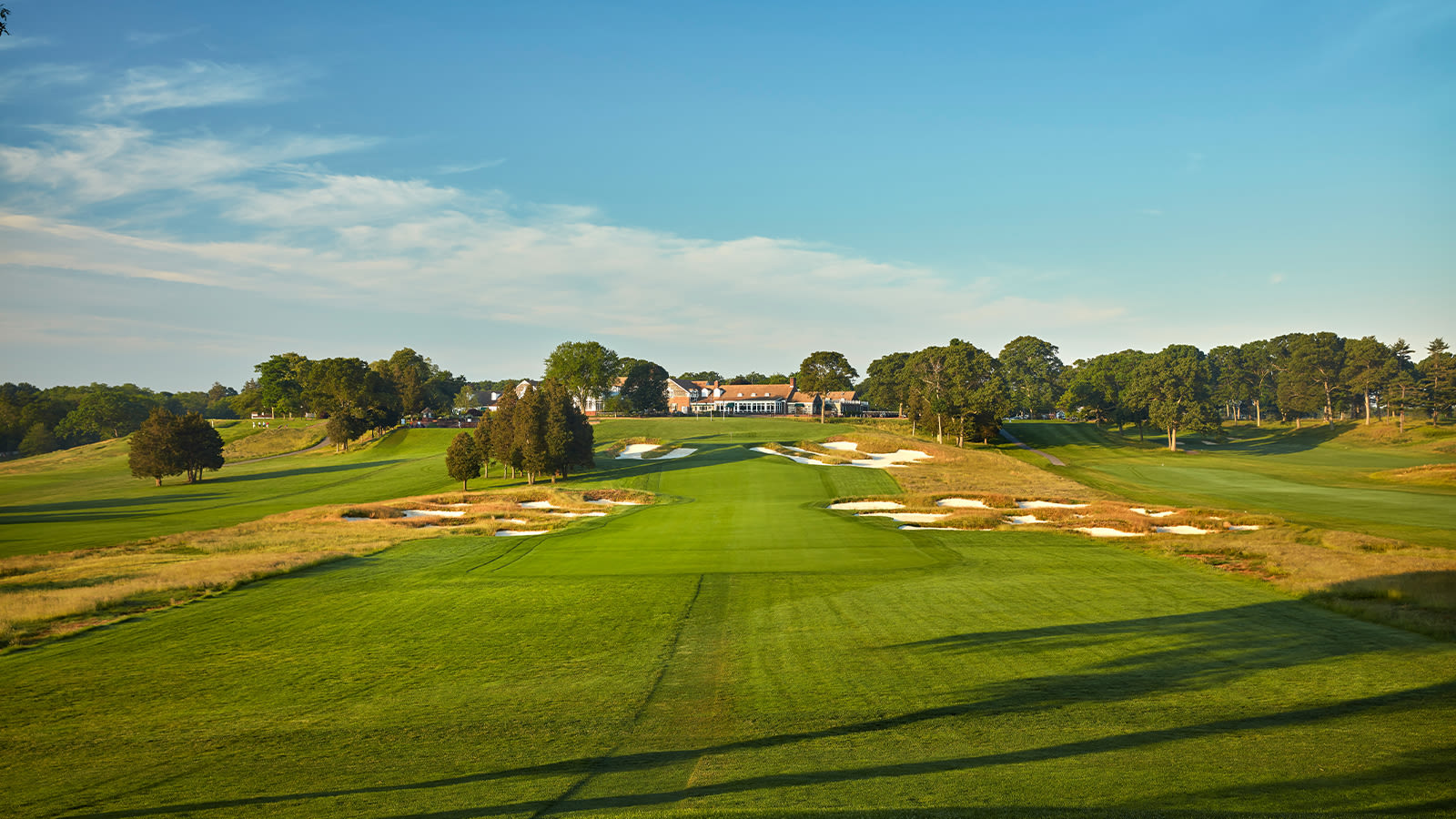
A view from the 18th hole of Bethpage State Park Black Course in Farmingdale, New York. (Photo by Gary Kellner/PGA of America)
Designed by famous architect A. W. Tillinghast and host of the 2025 Ryder Cup, Bethpage Black in Farmingdale, New York on Long Island is one of America's most difficult and well-known courses . . . but also one of its best values. New York State residents can play Bethpage Black for $70 on weekdays and $80 weekends, plus even less during twilight. Out-of-state residents pay a little more at $140 and $160 but it's still a steal for such a course.
Be warned, Bethpage Black is tough, though. Its got a "WARNING" sign for a reason and is rated 77.5 with a slope of 155. Tour players play the Black from around 7,450 yards, so its long with plenty of trouble lurking. Bethpage was home to the 2002 U.S Open won by Tiger Woods, 2009 U.S Open (Lucas Glover) 2019 PGA Championship (Brooks Koepka) and will welcome the world for what's sure to be an epic Ryder Cup next year.
The Ocean Course at Kiawah Island
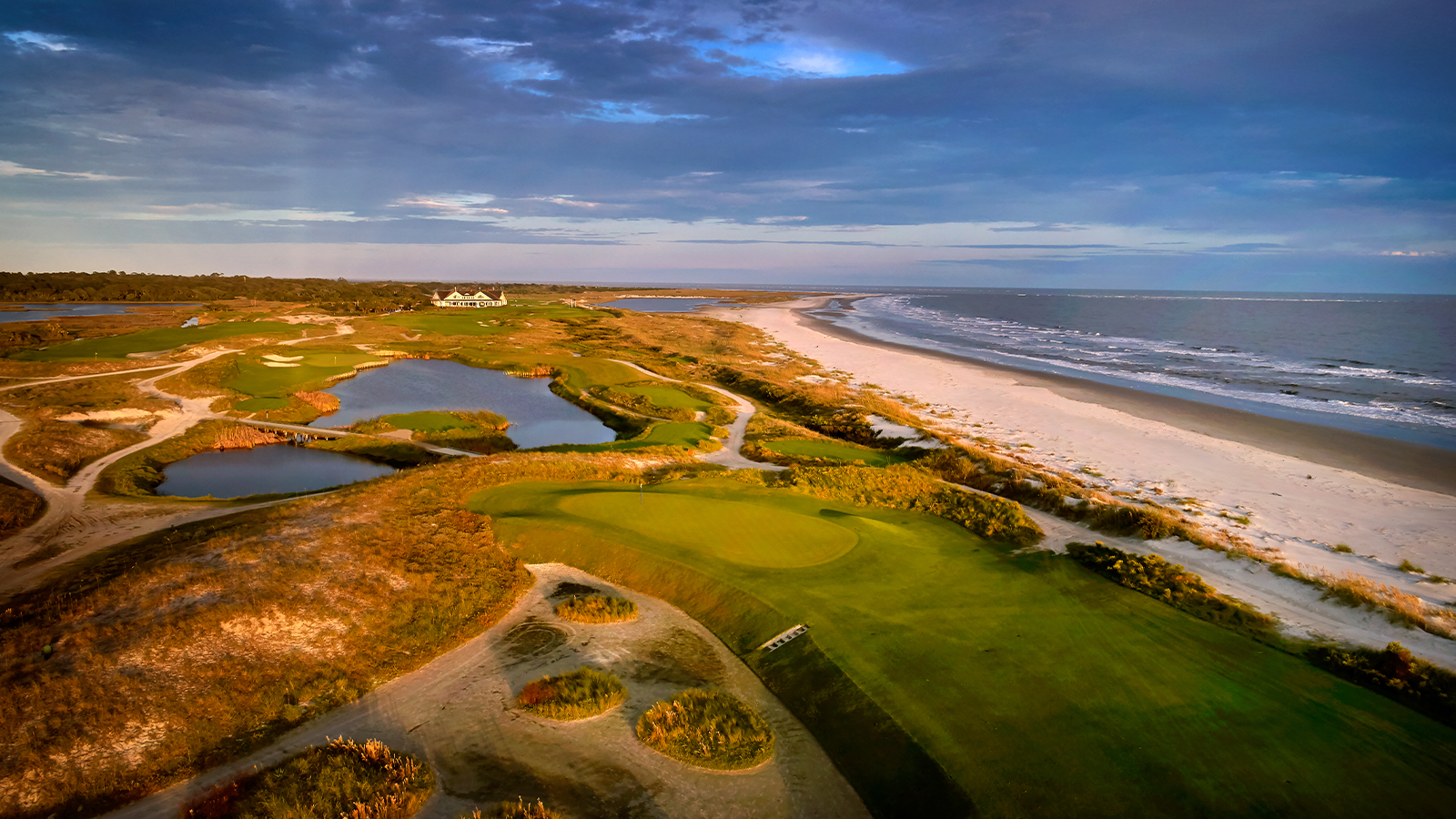
Kiawah Island Resort
This spectacular test of golf along the Atlantic Ocean in Kiawah Island, South Carolina, was designed by Pete Dye and Alice Dye back in 1991. Its a stunning layout with a front nine and back nine that boast the most oceanside holes in the Northern Hemisphere, with 10 altogether. It played host to 1991 Ryder Cup, won in dramatic fashion by the U.S., as well as KitchenAid Senior PGA Championship (Denis Watson), 2012 PGA Championship (Rory McIlroy) and 2021 PGA Championship (Phil Mickelson).
One of the interesting design points of The Ocean Course is Pete Dye's original intent to have the holes be under the dunes that run between the beach and the course. Alice Dye suggested the fairways and greens be propped up so golfers could have unobstructed views of the Atlantic Ocean.
As a result, the scenery became more breathtaking but the course was also more exposed to the wind, adding a level of difficulty to an already tough golf course. Players can experience dramatic and unpredictable changes in the wind (up to an eight-club difference at times, per the course's website). The Ocean Course tips out around 7,800 yards with all the par 3s around 200 or longer, and the Dyes didn't hold back on penalizing bunkers, lurking water and tight fairways.
While a stern test of golf, it's hard to beat the iconic views of this course.
Pebble Beach Golf Links
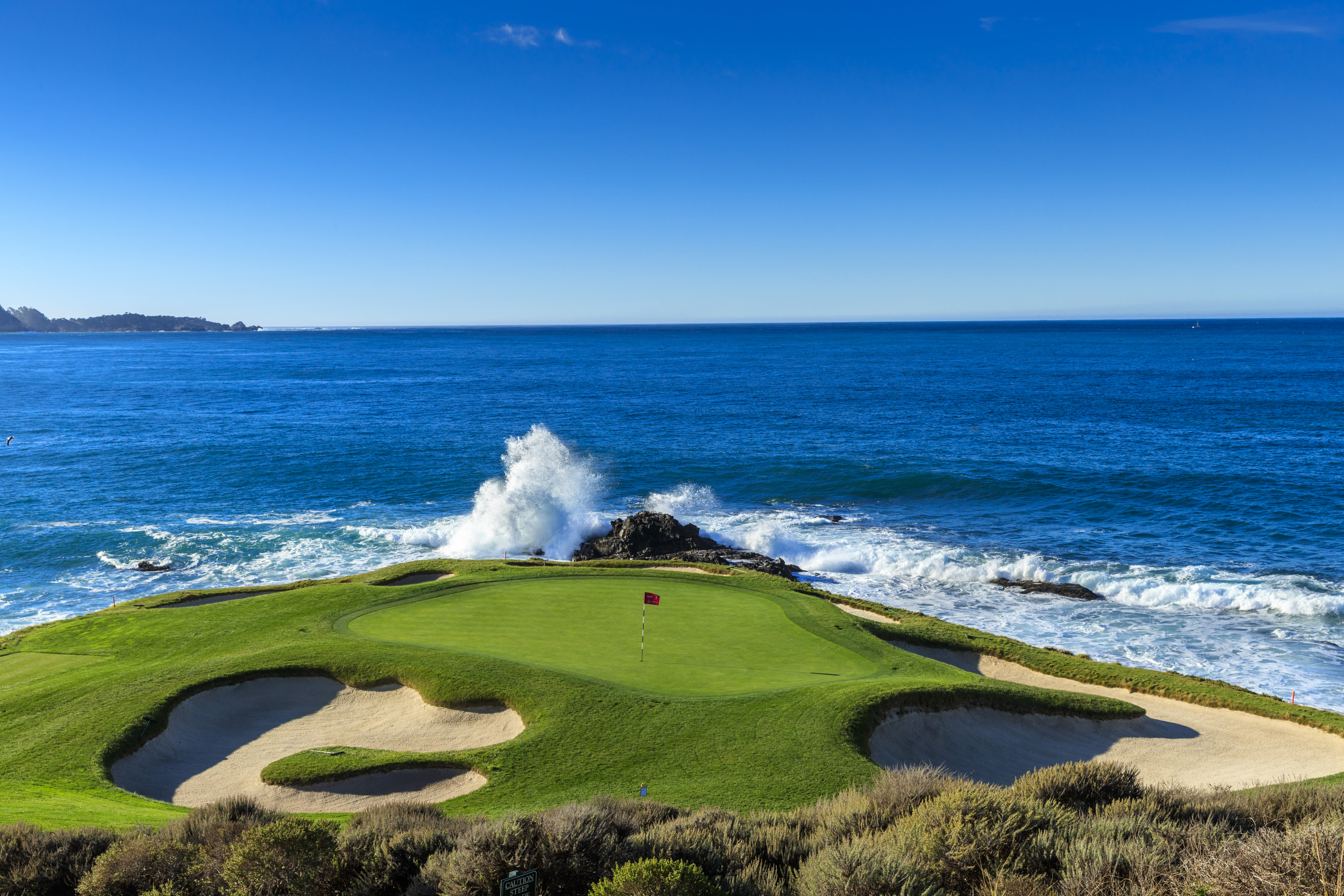
No. 7 at Pebble Beach. (USGA/John Mummert)
One of the world's most famous courses finds is No. 3. Pebble Beach Golf Links in Cailfornia is on many golfers' bucket lists as a must play, and how can you blame them? The views alone on holes like the par-3 7th (above) on the Monterey Peninsula will make your round worth it.
However, Pebble Beach also can play tricky and difficult; especially when the wind begins to blow. The course can stretch to over 7,000 yards and plays even longer in blustery conditions. Add in the fact that the course's greens are an average of just 3,500 square feet, the smallest on the PGA TOUR, plus a depth of 26 paces, and the course lives up to architect Jack Neville's vision of long irons into small greens.
The greens are also surrounded by 118 bunkers, six more than The Old Course at St. Andrews per Pebble Beach, which squeezes them and places a premium on accurate shotmaking. Enjoy those epic views . . . and bring plenty of golf balls!
Whistling Straits (Straits Course)
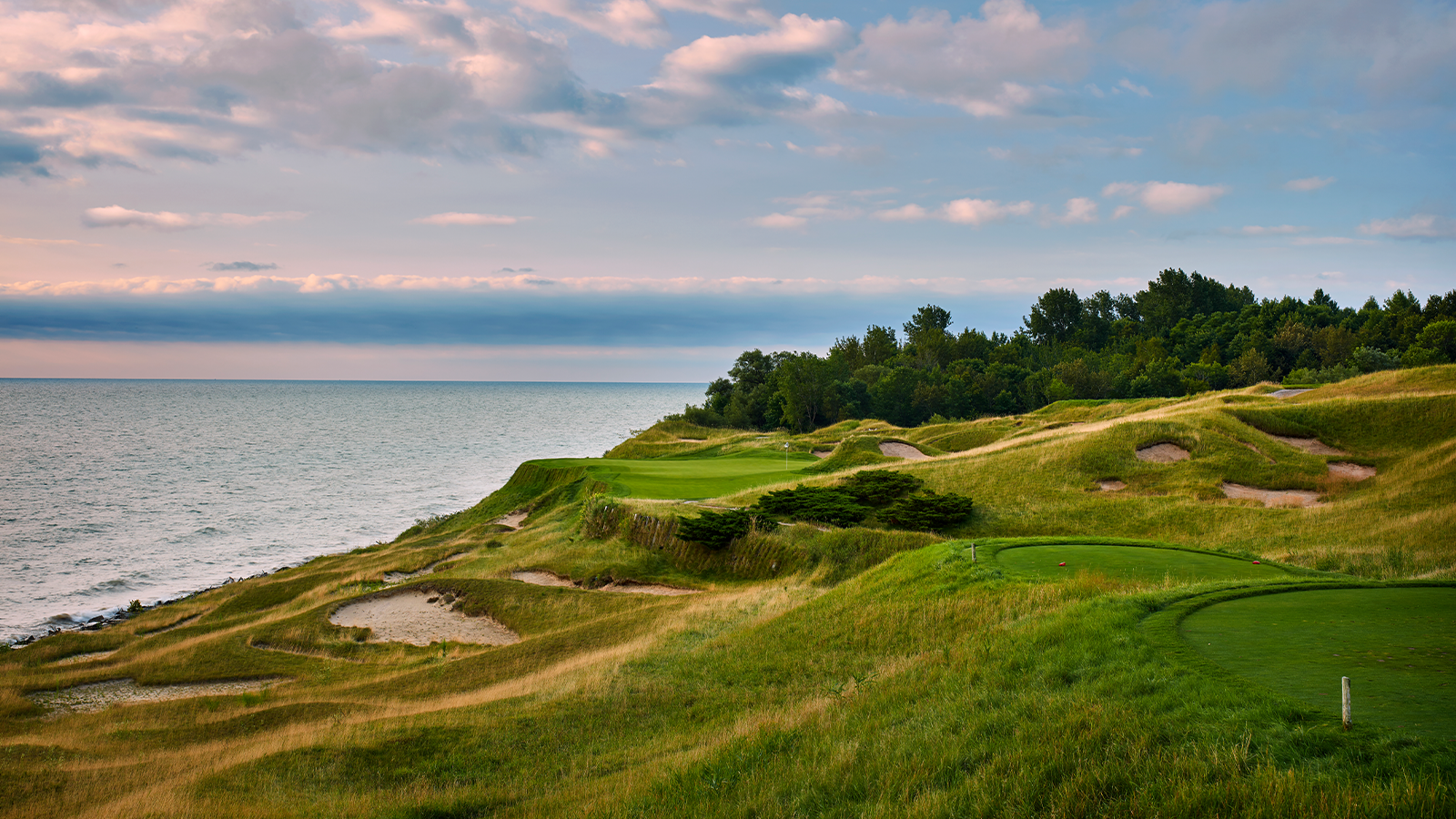
A view from the 17th hole of the Straits Course at Whistling Straits in Wisconsin.
The fourth course is another one with plenty of amazing vistas that also packs a punch when it comes to course difficulty.
Whistling Straits' Straits Course in Kohler, Wisconsin, was designed by the legendary Pete Dye as a links layout that looks like its straight out of Ireland. Holes are routed along the Lake Michigan shoreline, with winding, bunker and dunes filled holes that will test every level of player.
The Straits Course tips out at 7,790 yards but its true difficulty lies in its ability to wreak havoc via penalizing trouble. Massive bunkers, undulating fairways and greens, knee-high fescue and, the star of the show Lake Michigan, all present different ways that make the course borderline diabolic. Add in some bluster coming off the lake, and the Straits will give you all you need to handle in 18 holes.
Given its penchant for delivering a testy experience, Whistling Straits has played host to some of golf's biggest tournaments, most recently the 43rd Ryder Cup in 2021 where the U.S. won over Europe in historic fashion. The Straits also was the site of the 2004 PGA Championship won by Vijay Singh, 2010 PGA Championship (Martin Kaymer) and 2015 PGA Championship, won by Jason Day in another record-breaking performance.
Championship history, beautiful views, tough conditions? Yeah, Whistling Straits has them all.
Honorable mentions
Torrey Pines (South Course)

Torrey Pines South Course
One of the top municipal golf courses in the country, Torrey Pines South brings the oceanside views but also a brutish test of golf. The course can extend to 7,800 yards with canyons and thick rough adding to a beautiful challenge.
TPC Sawgrass (Stadium Course)
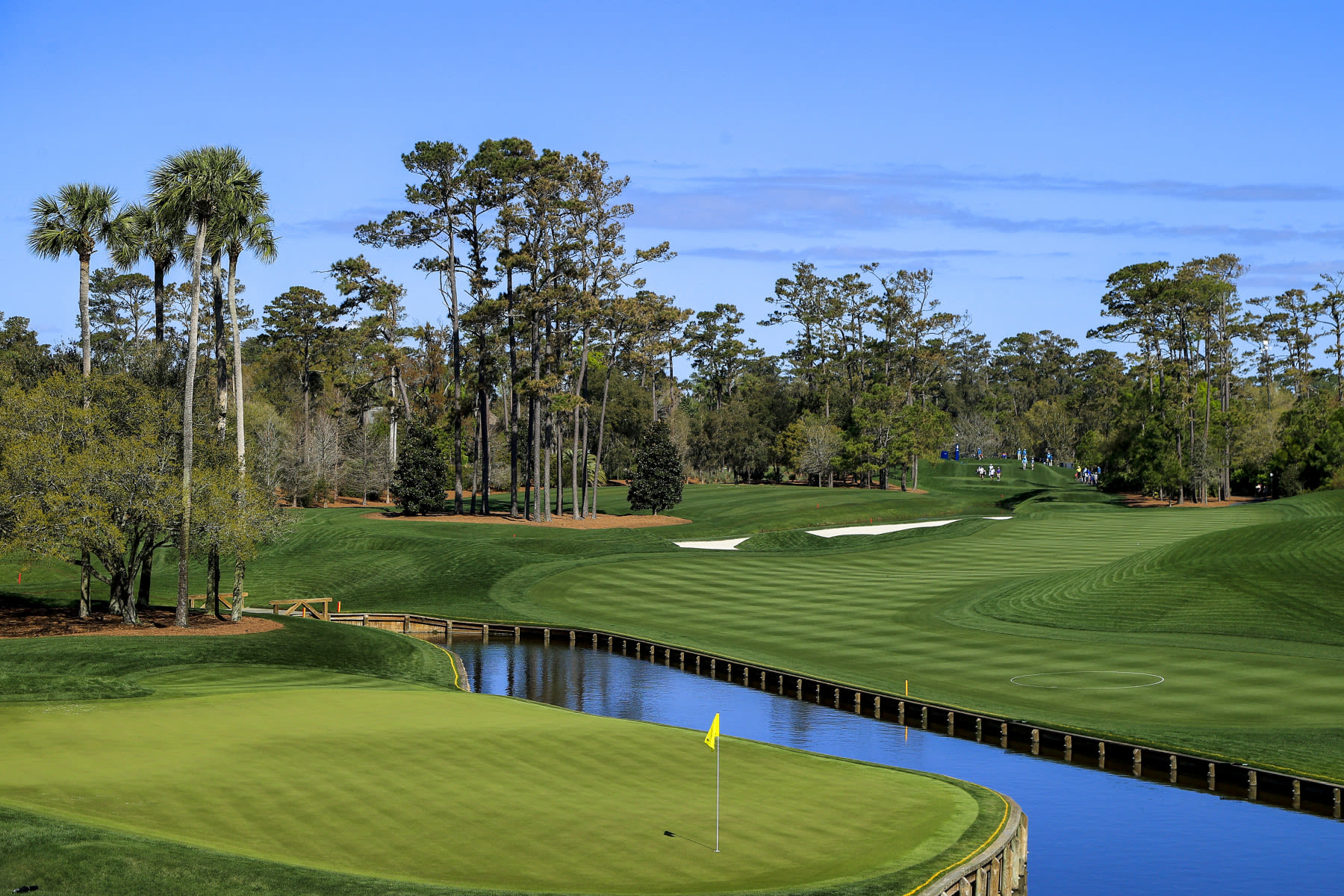
The Stadium Course at TPC Sawgrass. (Getty Images)
Another Pete Dye design; sense anything coming? Yes, like The Ocean Course and Whistling Straits, TPC Sawgrass' Stadium Course plays tough. Tight fairways, small greens and lurking water awaits golfers at every turn. And we didn't even get to No. 17!
Chambers Bay
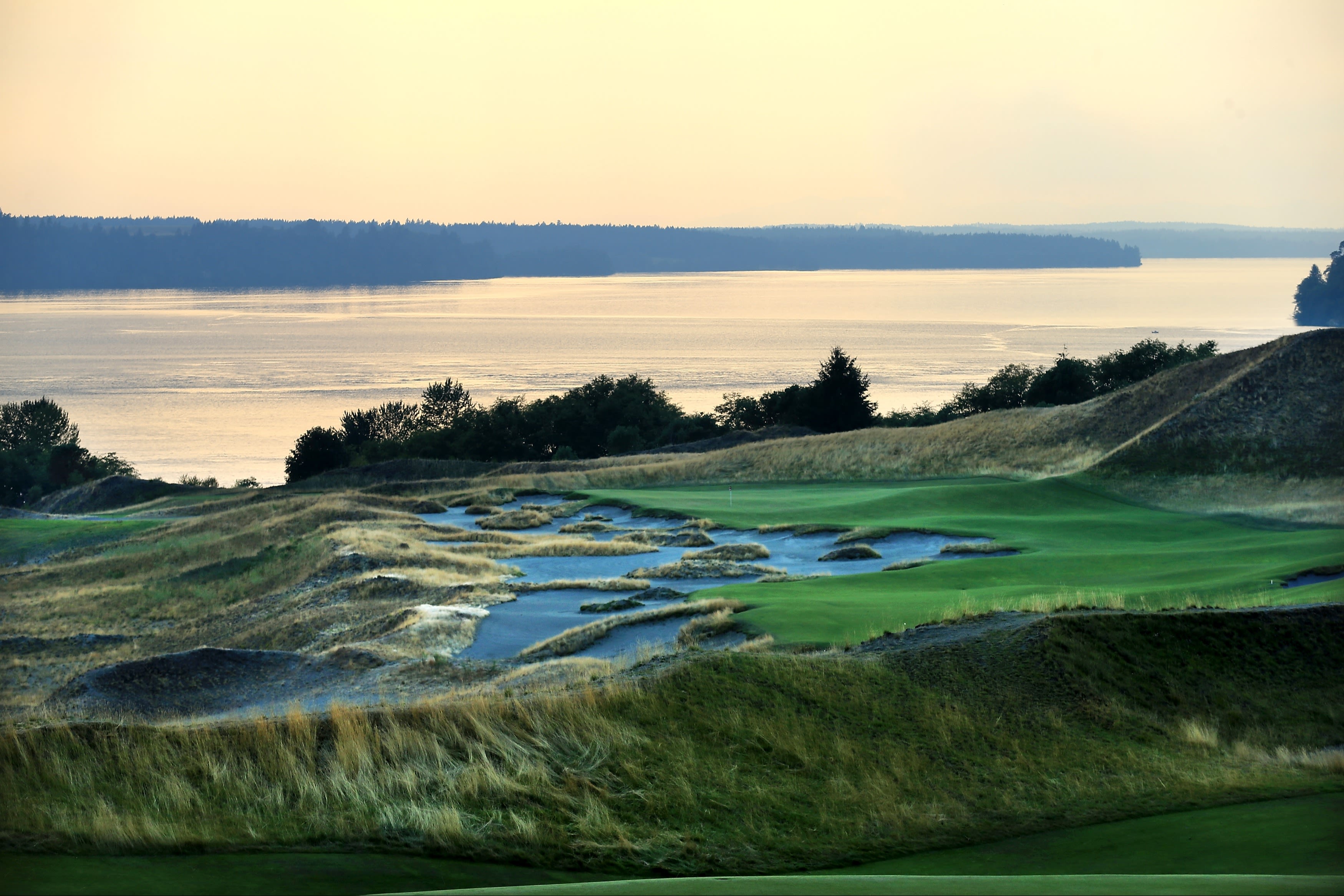
(David Cannon/Getty Images)
An absolute gem near Seattle, Chambers Bay had a brief appearance on the national stage during the 2015 U.S. Open. It's a course full of towering sand dunes, massive, undulating fairways and big bunkers surrounding the greens. The views of the Puget Sound take the sting out its difficulty!
